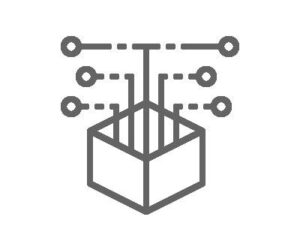Navigating career change—knowing when to leap from decline to growth.
For decades, careers were built like ladders. Choose a field, specialize, and climb. But in today’s world of disrupted industries and shortened skill lifespans, career development no longer follows a single path. It moves in cycles—growth, stability, and decline. Managing your career today means learning to navigate the transitions between these cycles—again and again.
Step One: Know Your Career Cycle
Every career, no matter the field or function, has a beginning, a peak, and an end. Yes—even if it feels like you’re doing great—it will end. It’s not a matter of if, just when. Unlike the old world of work, where a career arc stretched over decades, today it might last only a few years.
You might find yourself in growth mode at 55, or hit decline at 35—not because of your performance, but because your job, your skills, or even your industry has changed.
Take the case of junior coders who completed their degrees just before ChatGPT and other AI tools took off—only to find themselves laid off as companies began automating routine coding tasks. They didn’t do anything wrong. But the role evolved faster than they did. And it won’t be the last time.
This is the new reality: recognizing a shift in your career cycle—not mistaking it for personal failure—is the first step toward moving forward. Knowing where you are in that cycle is your strategic advantage.
Step Two: Use The Right Tools
Navigating today’s career landscape isn’t just about talent or titles. It’s about managing three key levers throughout your career life cycle:
1. People: Your Network Isn’t For Job Hunting
You build your network when your career is stable, not when it’s in decline. That way, when the time comes to transition, this network becomes your early warning system, your learning hub, and your launchpad into what’s next. It also ensures that new opportunities will find you.
The most important career conversations happen in rooms you’re not in. Someone says, “Do you know anyone who can…”—and you want your name to come up.
To make that happen, people in that room need to know who you are and what you bring. That’s why you build a network before you need one—by expanding your circles while things are steady, inside and outside your organization or field. Stay in touch. Share what you’re working on. This keeps you visible and reminds people of the value you offer—so when the right opportunity comes up, they’ll ping you.
You’ve likely seen them on LinkedIn—former colleagues who stay connected by sharing insights about navigating tough client negotiations, responding to shifting market demands, or reflecting on team wins and industry trends. These steady, low-pressure touchpoints keep their network warm—and help ensure they’re top of mind when new opportunities arise.
2. Professional Identity: You Are Not Your Job Title
In a world of constant change, defining yourself by your current job is risky. Your title might not exist in a few years—or your company might not either.
That’s why your professional identity needs to evolve with you. Think in terms of skills, strengths, and impact. What do you know how to do? Who benefits from that? What kinds of problems are you good at solving?
Make sure that identity shows up not just on your résumé, but in your online presence. Both should reflect you—not just your current role. If what you’re describing becomes meaningless once you leave your job, it’s not your identity—it’s your job description. Reframe it. Highlight the value you brought, the impact you made, and the skills you gained. Make it clear what you can do for someone next.
When someone Googles you—or visits your LinkedIn profile—they should immediately understand the value you offer.
Don’t just tell them how great you are—show them. A product lead, for example, might describe reducing launch time by 30% through better cross-functional alignment, or scaling a platform to support 10x more users. That kind of language doesn’t just say “I’m good at this”—it shows it, with results that speak for themselves.
3. Personal Development: Learn For Tomorrow, Not Just Today
When you’re in the thick of doing your job, it’s easy to let learning slide. But that’s a risk you can’t afford in a world of disappearing roles and emerging skills.
Personal development is how you scan the horizon. It helps you spot trends, explore interests, and prepare for new directions before you’re forced to.
Whether it’s a new technology, a shifting market, or a reinvention entirely, staying curious and carving out time for growth keeps you from getting stuck when the cycle turns.
Step Three: Embrace Transitions
The hardest part of managing a modern career isn’t the job itself—it’s the space between jobs. The decline phase. The uncertainty. The blank slate.
Most of us were trained to fear that in-between zone. But it’s also where reinvention lives. And if you’ve built the right foundation—people who know your value, a clear identity beyond your last job title, and a habit of constant learning—you’ll find the next path faster.
Your Next Career Starts Long Before You Need It
Careers today are built less like ladders and more like climbing walls—full of pivots, pauses, and reinventions. Managing your career isn’t about locking into one path. It’s about staying in motion—knowing when to hold on, when to shift, and when to reach for the next opportunity.
Because the secret isn’t to chase a “forever job.” It’s to build a toolkit that makes you ready for the next one—again and again.









